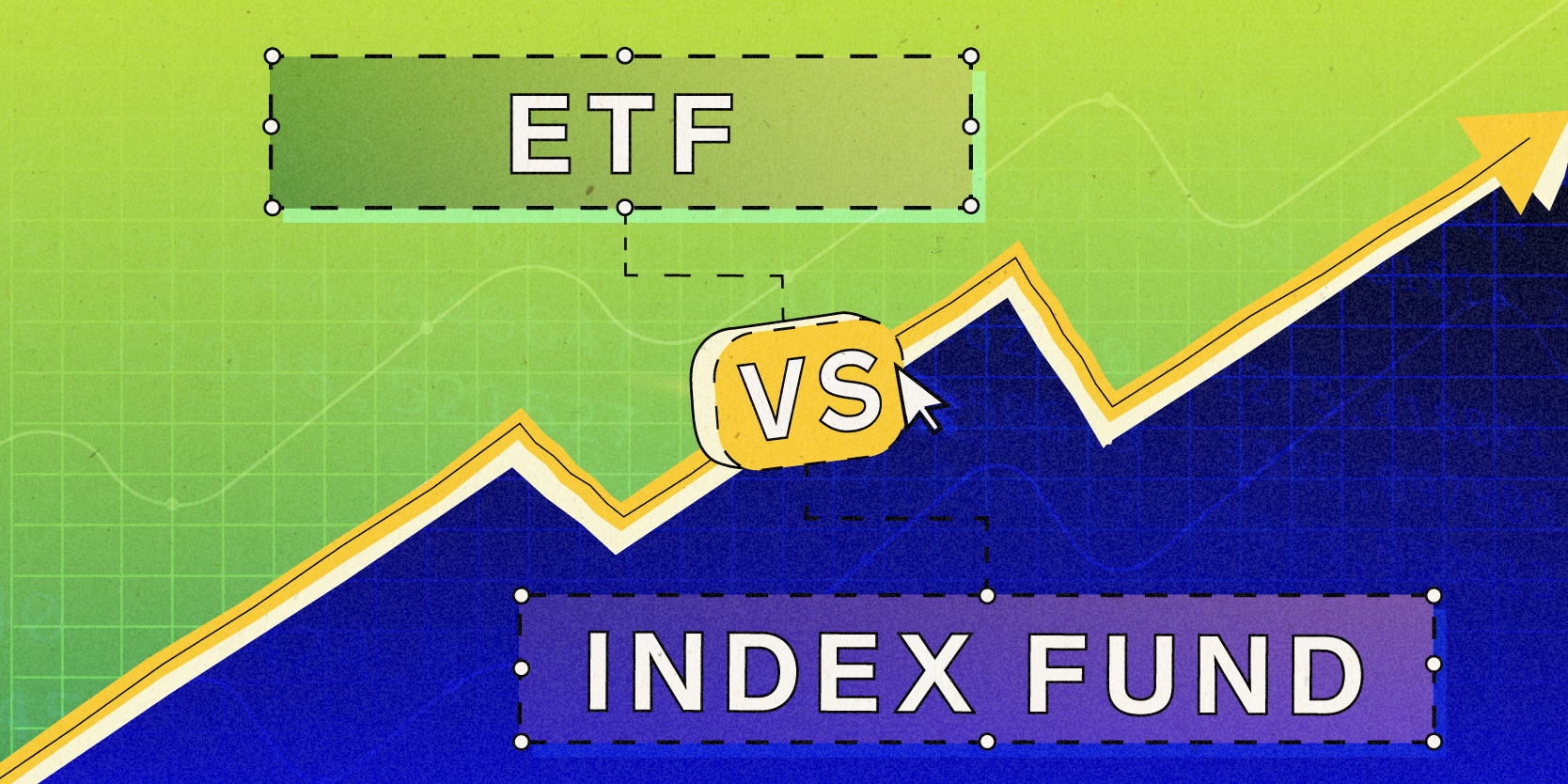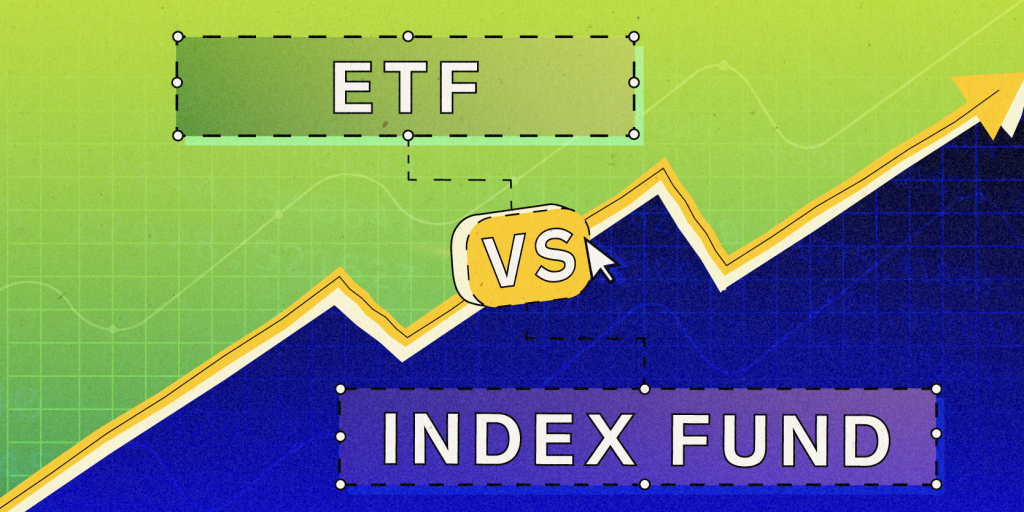
Alyssa Powell/Insider
- An exchange traded fund, or ETF, is a type of security that tracks an underlying asset.
- An index fund is a type of mutual fund or ETF that tracks the performance of a target index.
- Both can offer strong long-term returns, diversification, and cost savings.
- Visit Insider's Investing Reference library for more stories.
When you're investing, one thing to consider is diversification – basically, owning a mix of investments within and across asset classes.
Index funds and exchange-traded funds, or ETFs, offer easy ways to diversify. These funds bundle several securities into one investment, giving you broader exposure to different companies.
For instance, "stock market indexes – like the S&P 500, Nasdaq, and Dow Jones Industrial Average – are not directly investable," says Chris Berkel, an investment adviser and founder of AXIS Financial in Edmond, Oklahoma. "Meaning, there is no way to buy the S&P 500 index (for example). However, you can invest in a fund that tracks it."
Here's what to know about ETFs and index funds, and how they differ.
ETFs vs. index funds: At a glance
Exchange-traded funds and index funds both combine many individual securities, such as stocks or bonds, into a single investment. That gives you a ton of diversification from the get-go. Both types of funds are also usually passively managed, which provides cost savings and strong long-term returns.
- An ETF is a type of security that tracks an underlying asset like an index, individual commodity, or a mixture of assets.
- An index fund is a type of mutual fund or exchange-traded fund that typically tracks the performance of a target index.
One major difference between ETFs and index funds is how they're traded. ETFs can be bought and sold throughout the day, while index funds can only be traded at the price point set at the end of the trading day. Additionally, ETFs may require a lower upfront investment and may offer tax savings when compared to index funds.
What is an ETF?
An ETF is an investment vehicle you can buy and sell on the market like you would with a stock.
But instead of representing a share within one company, "an ETF is typically a basket of securities like stocks, bonds, commodities, options, or a combination," Berkel says. "ETF issuers can choose to track an index or do something more custom to tackle a specific market anomaly."
For instance, ETFs can be structured to track a market-weighted index, like the S&P 500, or other assets like an individual commodity, a collection of securities, or a specific investment strategy. When that index or asset performs well, so does your ETF. The aim of ETFs is to follow the market, whereas other investments like mutual funds aim to beat the market.
Here's how it works: A fund provider creates an ETF and sets it up to track a particular index or asset. Then, the provider buys the underlying assets and sells shares in the fund to investors. When you buy a share in an ETF, you own a portion of the fund, but not the underlying assets.
As an ETF's shares are bought and sold throughout the day, the price of an ETF can go up or down. This is different from mutual funds and index funds, which only trade once a day after the market closes.
One primary advantage to ETFs is diversification; owning an ETF allows you to invest in many different stocks, bonds, commodities, and even industries. ETFs are also passively managed - because they track the performance of another asset - so they're cheaper to run. "By reducing operational expenses, investors benefit by saving money on expense ratios and other investment costs," Berkel says.
Plus, passively managed funds tend to outperform actively managed funds over the long term. And because ETF investors are taxed only when they sell the investment, they may realize tax savings compared to a mutual fund.
| Pros | Cons |
|
|
What is an index fund?
An index fund is a type of mutual fund or ETF that tracks a particular market index. "They do this by typically replicating the underlying constituents in the index," Berkel says.
Here's how this type of fund works: An index fund manager pools money from many investors and builds a portfolio of individual stocks, bonds, or securities. The portfolio mimics the composition of a target index, so the fund's value will mirror the gains and losses of the index being tracked. Some index funds track stock market indexes, like the Dow Jones Industrial Average, while others track indexes in other markets like bonds, commodities, or real estate.
"Index funds are great for providing broad exposure to a specific segment of the market, like large-cap stocks or the total bond market," Berkel says. "ETFs make more sense for investors trying to get exposure to a specific part of the market or who are trying to integrate risk management techniques into the portfolio. Examples of this might be accessing the highest quality stocks from undervalued countries around the world or managers using options to mitigate downside portfolio risk."
The manager will either buy shares from every company listed on the index or buy shares from a representative sample. When deciding the number of shares to buy, the manager can use a weighting strategy.
- Most index funds are market-cap weighted, which means the fund purchases more of the largest companies (by capitalization) in the index than of the smallest companies.
- Other index funds might be price-weighted, which means higher-priced assets have a bigger share in the index than lower-priced assets.
- And with equal-weighted index funds, every asset receives equal weight.
The fund manager then sells shares of the index fund to investors, regularly adjusts the share of assets in the portfolio, and then gives dividends, interest, and capital gains to the fund's investors. An index fund could be a good way to minimize risk because the price of individual stocks may rise and fall, but indexes tend to rise over time. They also come with all the benefits of a hands-off approach, including lower fees compared to mutual funds and typically stronger returns in the long term.
| Pros | Cons |
|
|
The financial takeaway
Index funds and ETFs are both low-risk, low-maintenance, and low-cost ways to see steady returns over time. But these investments aren't one size fits all.
When choosing an ETF or index fund, you'll need to check which asset the fund follows and whether you're comfortable with the diversification within the fund. Then, compare each fund's expense ratio and other fees you might pay, such as commissions to buy or sell the investment.
